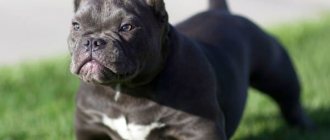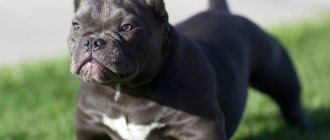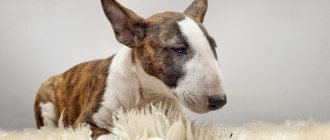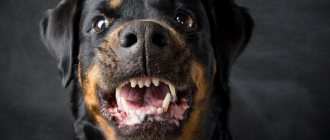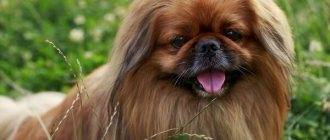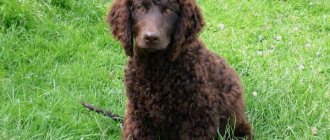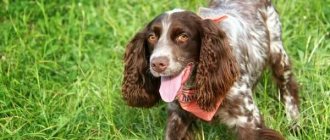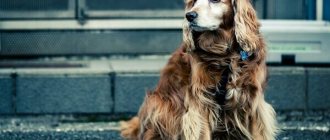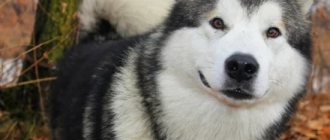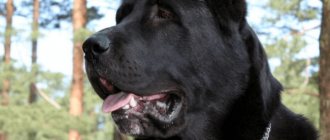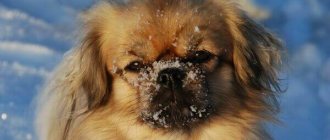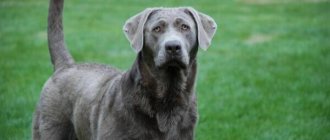A Pekingese dog with an amazing origin story and a cute face. Of course, the bulging eyes are a little scary, but that is what makes her different from other dogs.
If you look at the photo of the Pekingese dog, it is simply adorable.
Origin story and what it looks like in the photo
Pekingese are dogs originally from China, which were bred by crossing representatives of the ancient Chinese decorative breed “Toy” with larger dogs.
Only representatives of the upper class were allowed to keep them, so the Pekingese always lived only in palaces and had personal servants.
Representatives of this breed have never been guards, watchmen or hunters. Their main purpose was to please and amuse their owners, and in temples they were worshiped as deities and considered a symbol of prosperity and happiness.
The coup d'etat in China had a negative impact on the Pekingese population - the rebels burned the imperial mansions to the ground, and the representatives of the breed who lived in them died. The British military managed to rescue several dogs and transport them to Europe.
In England, Pekingese quickly gained popularity, but they still remained dogs that were not accessible to everyone - the price of puppies was too high for ordinary people.
The breed acquired its official name only at the end of the 19th century, simultaneously with its recognition by dog handlers.
It should be understood that Royal Pekingese are not a separate breed . This is how breeders call individuals who ideally meet the standard, which, by the way, does not strictly regulate the height and minimum weight of adult dogs, but only describes the average acceptable indicators.
Buying a puppy
A competent breeder, when selling a puppy, will definitely ask questions - where the pet will be kept, how many people are in the owner’s family, and whether participation in exhibitions is planned.
You should take an interest in the following data:
- availability of a veterinary passport;
- puppy's parents;
- conditions of keeping the litter;
- presence of genetic diseases.
Do not hesitate to write down your answers - it is impossible to remember everything, and theses will be an excellent help in studying breed characteristics.
Description of the breed
Royal Pekingese are a decorative breed of dog, not intended to perform working functions.
To meet the requirements of the standard, representatives of this breed must have:
- flat back, narrowed lower back and slightly slanted shoulder blades;
- muscular, well-defined withers;
- short and massive paws;
- wide and short muzzle with skin folds in the nose area;
- a high-set tail, which should be pressed to the back and slightly curved to the side;
- small heart-shaped ears that seem to droop due to the thick fur covering them;
- large, slightly protruding eyes with brown irises.
The coat is long and thick, the undercoat is dense . The quality and length of wool is influenced by the breeding and nutrition conditions of dogs.
Coat
The coat is long, lush, straight, slightly raised by a thick undercoat. It is shorter on the muzzle and on the outer sides of the legs.
The color is quite varied: red and red, black and white (with the exception of albinos), sand, “chinchilla”, which can be with or without a black mask. With a white color, it is desirable that the spots are located symmetrically on the head.
Character traits
Pekingese are proud dogs, accustomed to special treatment and the fact that the whole world revolves around them. This is exactly the kind of attitude they expect from their owners.
From the very first days of their appearance in the house, these dogs establish contact and a close emotional connection with their owner, which determines their ability to capture a person’s mood and sense changes in him.
Representatives of this breed are characterized by calm, measured behavior; although they are attached to their owner, they are not inclined to impose their company and tolerate loneliness without problems, since they are quite independent.
However, this does not mean that Pekingese do not need attention. On the contrary, if there is a lack of it, the pet’s behavior may change for the worse, and aggression is possible, especially towards the one who receives more attention from the owner.
Representatives of this breed are smart, so they quickly remember how they can or cannot behave, but natural stubbornness can seriously complicate the training process, so the owner will need maximum patience, endurance and perseverance.
Expert opinion
Kozhevin Semyon Kirillovich
Expert dog handler.
Royal Pekingese are true imperial dogs. They are used to being idolized and treated with all honors and do not tolerate disdain. These dogs cannot stand noise and scandals, they need peace and tranquility, so they are ideal as a pet for elderly couples. They tolerate short-term loneliness well, but if the owner is not around for more than a few hours, they begin to feel sad and melancholy, which can lead to a complete refusal of water, food, and even their favorite treats.
Advantages and disadvantages
It is generally accepted that representatives of decorative breeds, including Pekingese, are suitable for almost everyone. However, this is not entirely true, therefore, when thinking about purchasing a Royal Pekingese, you should familiarize yourself with the advantages and disadvantages of these dogs in advance.
The advantages of the Royal Pekingese include::
- unusual, attractive appearance;
- devotion;
- ability to withstand cold;
- fairly good health;
- possibility of apartment maintenance;
- calm character;
- no need for long walks and physical activity;
- unpretentiousness in food.
Among the disadvantages of the breed are noted:
- stubbornness and willfulness;
- jealousy;
- excessive independence;
- snoring and sniffling;
- heat intolerance;
- need for attention.
In addition, Pekingese require careful grooming and are characterized by heavy seasonal shedding.
Cost of a dog
How much does a Pekingese cost? The price of an animal directly depends on its pedigree. The presence of official documents, vaccinations and a personal brand increases the cost of the breed several times.
On average, Pekingese puppies have a price tag that varies from 10 to 25,000 rubles.
Experts recommend purchasing a pet from special clubs. They usually contain the winners of numerous international exhibitions.
Representatives of this community are distinguished by their beautiful and smooth coat, unusual color and calm character.
Is he good with children and does he get along with other pets?
Royal Pekingese do not have a hunting instinct, so they can get along well with cats, rodents and birds, but only on the condition that they still receive the main attention of the owner, and not someone else.
Relationships with other dogs are more difficult.
The fact is that Pekingese have a pronounced Napoleon complex, which does not allow them to build friendly relationships with other dogs.
Pekingese are unlikely to be able to make friends with children - representatives of this breed are sensitive to pain and are not characterized by special patience. In addition, these dogs do not like the noise and fuss that accompany children's games.
Of course, they can get along with school-age children, but the child must respect the dog and not claim its personal territory or toys.
Characteristic
Dogs have special features and the first is the eyes of the Pekingese. This is the most painful place. By structure, they have a bulging shape with a bare upper eyelid, therefore they are not protected from six and dust and require specific care.
The head is large in comparison with the overall size. In this case, the width of the skull is greater than the length. The frontal part is wide. The muzzle is short and in structure resembles a bulldog shape.
The lips are black in color, the lower one completely hides the tongue and teeth, which are small and tightly set. The nose is only black.
The ears are small and covered with hair. The neck is short. The body is rectangular in shape. The chest part is voluminous with sloping ribs. The groin is tightened. The tail is of medium thickness when raised.
The hind and front legs are stable with good joints. The hind legs with developed thigh muscles are lighter than the front legs. Shoulders and elbows are parallel and directed back. The wrists of the front paws are at a slight angle to the surface, and the hands of the hind paws are straight.
A prerequisite is the presence of a lush mane up to the shoulders and backcombing on the paws, tail and ears, which should not hide the structure of the silhouette. The fur is thick and can be of any color.
The most popular dog names in alphabetical order with recommendationsShar Pei - history of the breed, character traits, care and possible problems + 87 photos
American Bulldog - history of the breed, appearance, specifics and characteristics, care (100 photos + video)
How to properly care
Royal Pekingese are not too demanding to care for; the owner's main efforts should be aimed at caring for the coat of these dogs.
Wool and bathing
The coat should be combed daily using a massage comb, a slicker brush and a furminator. The coat requires especially careful combing during shedding.
NOTE!
You should bathe your pet using special shampoos and conditioners for long-haired dogs a maximum of once a month, unless it gets very dirty.
If the pet does not participate in exhibitions, it can be trimmed, giving it more individuality and making it easier to care for its coat.
Claws
Trim the nails with a guillotine nail clipper once every 3-4 weeks, smoothing the sharp edge with a nail file.
Eyes
Wipe daily with a cotton pad soaked in chamomile infusion, tea leaves or warm boiled water.
Teeth
Brush weekly using a special paste and brush - this will help avoid the formation of plaque.
Ears
Inspect and clean from sulfur and dirt by wiping with a cotton pad soaked in hydrogen peroxide or a special product at least once a week.
There is a risk of damaging the eardrum when using cotton swabs.
What to feed your Pekingese?
The diet is balanced: low-fat and boiled chicken or beef, cottage cheese and kefir, boiled fish, which is thoroughly cleaned of bones.
Perhaps surprisingly, they love fresh vegetables and fruits, which help normalize the gastrointestinal system.
At first, the puppies are given a six-course diet of buckwheat, oatmeal and rice porridge. Later they switch to a two-time mode.
Life expectancy, health and major diseases
On average, Royal Pekingese live 12-15 years, with some individuals known to live up to 20 years.
Most often, representatives of this breed are diagnosed with:
- problems with the spine;
- urolithiasis;
- skin and cardiovascular diseases;
- cataract;
- conjunctivitis;
- inflammation of the tear ducts;
- renal failure;
- hydrocephalus.
In addition, Pekingese are dogs with a brachycephalic skull structure, which causes breathing problems, especially in the heat and in case of excessive physical exertion.
Learning ability
The Pekingese dog is prone to dominant behavior; it constantly looks for weaknesses in the owner’s behavior in order to take a dominant position. It is not easy to train a Pekingese - he is stubborn and persistent. You need to start training at an early age with everyday commands: “Fu”, “Come to me”, “Sit”, “Lie down”, “Near”, “Place”. You should first accustom your pet to a leash. You need to prepare your dog for exhibitions from the age of two months.
Pekingese training rules:
- Exercise at a certain time - the dog appreciates the routine.
- Don't start training with a well-fed dog.
- Don't rush into mastering commands. Secure one, and only then proceed to the next one.
- Start in a calm environment, then introduce complications and stimuli.
- Insist on following this command and sincerely praise the dog for its work.
Pekingese: breed description, appearance
Nutritional Features
The choice of food type depends on the owner . These can be natural products or ready-made dry food - the main thing is that the diet is balanced.
The advantage of natural feeding is the ability to choose products for your pet and control their quality. In addition, nutrients of natural origin are better absorbed by the dog’s body.
Royal Pekingese should be included in the menu:
- offal;
- lean meat;
- cereals;
- fruits, herbs and vegetables;
- sea fish;
- dairy and fermented milk products.
It is forbidden to feed representatives of this breed:
- bones;
- sweets;
- fatty meat;
- legumes;
- fried, smoked, salted, spicy and pickled foods;
- exotic fruits;
- baked goods;
- pasta.
IMPORTANT!
Additionally, you should give your pet a complex of vitamins and minerals.
Dry food is more convenient to use and store, and also does not require additional intake of a vitamin-mineral complex. You should choose food from products of at least premium class, taking into account the age, health and physiological state of the pet.
The most suitable food for Royal Pekingese: Happy Dog, Acana, Artemis, Almo Nature, Canidae, Orijen, 1st Choice, Royal Canin, Arden Grange, Brit Premium.
How to choose?
When choosing a puppy, you should first make sure of its health . So, if your future pet has a rash or irritation on the skin, there is increased lacrimation, there is an unpleasant smell from the ears and there is discharge from the nose, most likely these are symptoms of some pathology.
In addition, it is important to examine the baby for compliance with the breed standard and check with the breeder about the availability of vaccinations, as well as all the necessary documents confirming, among other things, the purebred of the puppy.
Bitches and males have virtually no differences in character, except that boys can be more assertive and straightforward . But there are external differences: the coat of males is thicker and more lush, because females undergo additional shedding after childbirth and estrus.
Mating
Pekingese reach sexual maturity at 7-10 months , but it is recommended to breed only at the 20th month of life. Then the Bitch will begin her third heat. Otherwise, she will not be able to bear, and most importantly, give birth to a puppy, because these dogs have a fairly large head. Doctors often resort to caesarean section.
Before mating, both dogs must be examined for pathologies, checked for diseases and cleaned of internal and external parasites. The girl should show primary signs of readiness: light spotting, swelling of the loop and playful behavior.
The girl is brought to the dog’s territory, the animals are given 10-15 minutes to sniff and get to know each other. If everything went well, the female will allow the cage to be mounted. Usually the act lasts 5-7 minutes , and the lock - 15-20 . At this time, the bitch is supported under the belly and is not allowed to sit down, and the dog is sent into the noose. Repeated mating is carried out after 2 days.
